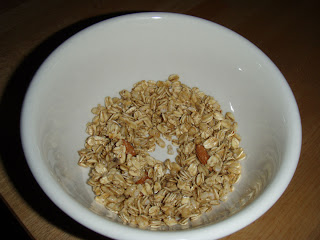 |
| Athlete, pre-race |
When I started thinking about writing this blog post, I was
going to head it up “Breakfast of Champions” as a mocking sort of title, taking
it from Kurt Vonnegut’s novel of that name. It turns out that the joke is on
me. To prove quite how much I’m coming
to the US cereal scene blind, I was completely oblivious to the fact that
“Breakfast of Champions” was the tagline of Wheaties, the cereal I was about to
write about.
I was going to call it Breakfast of Champions because it had
fuelled me to a moment of sporting triumph.
We’d arrived in Pigeon Forge, Tennessee – the home of Dolly
Parton. It’s the Las Vegas of the hillbilly country music south, but without
the drinking or gambling. It’s all bright lights, crappy amusement centres, bad
hotels and Dollywood. Dollywood actually has some great rollercoasters, but the
clientele could have lived up to every cliché. Few teeth, bad hats, plaid
shirts and an excess of religion.
Along with all the tat, Pigeon Forge is also the gateway to
the Great Smoky Mountain National Park – the setting is pretty stunning. And it was where the first Smoky Mountain
Santa Hustle was taking place. Beth, like the sadist she is, had entered me
into a 5km race, along with Skip and Mark who’d joined us for Susan’s 40th.
I’d never run a serious, group race before. My natural pace is very, very slow.
The omens were bad. Even worse when I knew I had to run in a Santa hat, and I
was going to start wearing a Santa beard, the morning after a big blow-out 40th
birthday party – the county may be dry and alcohol free, but our cabin was not.
But, on the morning of the race I had a bowl of Wheaties
Fuel. [Beth suggested this edit:] My gorgeous and brilliant wife (who I wrongly accused as a
sadist in the paragraph above) had selected it for me especially for the
raceday having a better understanding of what good American cereal is and a
little sick of me going for just the most outrageously coloured boxes. Along
with a number of other benefits, it definitely got me to the finish, and fast,
under 27 minutes. 9th in my age group. Now, 9th might not
be considered “champion” by some. But when your expectations are as low as mine
were, it’s a massive achievement.
Before I get on to the Wheaties, though, I’d better run
through the other things that may have improved my performance:
-
I had a bit of a hangover, and perhaps the booze
was still in the system
-
Running with Mark and Skip who paced and pushed
me brilliantly
-
A peanut butter Clif bar, possibly the best
tasting and textured energy bar I’ve ever had
-
Ice cold weather (substantially below freezing)
meant you’d better run fast enough to stay warm
For the time being I’m giving credit to the Wheaties Fuel.
These aren’t the traditional Wheaties. They’re one of the many subcategories of
cereal that exist in the US.
 |
| One actual portion of breakfast |
One great thing is that unlike a lot of other cereals, they
aren’t trying to prove some kind of worthiness or low-calorieness. There’s much
less of a lie about them. They know they’re full of calories and don’t really
care. The crazy high sugar cereals of the US claim to have “120 calories” in a
serving, Wheaties Fuel says bollocks to that and admits to 220 or so. It’s
still the same sized portion – ¾ of a cup – but it’s high density, heavy and
lovely, unlike the puffy things which are all air, inflated, meaning that ¾ of
a cup weighs about 2 grams. Laughably,
of course, 120 calories isn’t enough for breakfast. It’s 1/10 of the amount of
calories even the scrawniest dieting freak supermodel needs for a day. And
breakfast is meant to be the biggest meal of the day. It’s a world of stupid
out there.
Not Wheaties Fuel. They actually do what they’re meant to.
They give you enough to get going.
And not only that, they’re delicious, too. They’re by far the best cereal that I’ve had
so far on this trip. There’s a heavy wheaty, cereally thing, in the flakes
(apparently bran). And there’s something like puffed rice, but thinner and
crunchier. The flavour has something malty in it, and some honey (Beth says
that I sound like I’m describing a beer, which might be why I’m such a fan).
It’s really, really nice. Not too sweet, but sweet enough to be edible.
Basically, Wheaties Fuel seem to be fantastic.
I am told that there are sports champions on the Wheaties box, and that pretty much every kid in the US takes up sports not so that they’re obsessed with winning the 3 man coxless luge in the Olympics, but because the Olympic gold medal would give them a chance of a place on the box – but I don’t think I’ll be getting my face on a packet any time soon. 9
th place in the 40-45 age group in a field on 1000 runners is great, but not quite that great.
 |
| The next Wheaties box |




















 One thing I’ve found since getting to America is how easy some things that used to be difficult are, and how difficult some things that used to be easy are. Recent experiences highlight both ends of that spectrum.
One thing I’ve found since getting to America is how easy some things that used to be difficult are, and how difficult some things that used to be easy are. Recent experiences highlight both ends of that spectrum.
